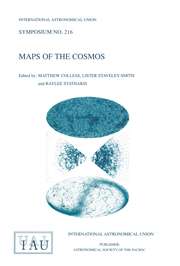Article contents
The NIRSPEC Brown Dwarf Spectroscopic Survey
Published online by Cambridge University Press: 26 May 2016
Abstract
This paper describes the status of a new 0.9 – 2.4 μm spectroscopic survey of low-mass stars and brown dwarfs. Flux-calibrated spectra of 30 objects from M6 to T8 have been obtained with a uniform spectral resolution of R=2,000. For the J-band alone, 60 objects have been observed. In addition, we have obtained the first sequence of spectra at R=20,000 (15 km/s) showing the detailed behavior of the J-band potassium doublets over the same range in spectral type. A few sources have been monitored for radial velocity variations, but none have been detected at the ±1–2 km/s level. Preliminary infrared spectral classification indices have been derived and several young brown dwarfs show clear spectral signatures of lower gravity. Our survey will be available on-line in the future.
Information
- Type
- Part 7. Atmospheres and Internal Structure
- Information
- Copyright
- Copyright © Astronomical Society of the Pacific 2001
References
- 3
- Cited by

